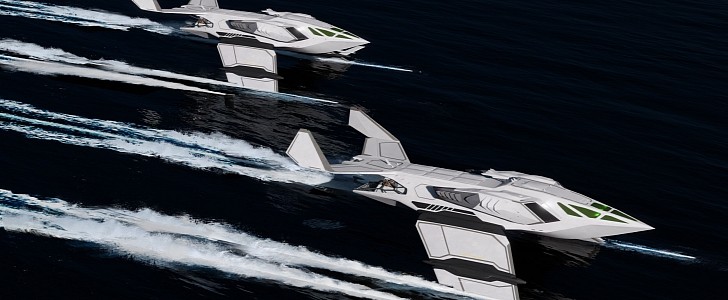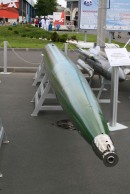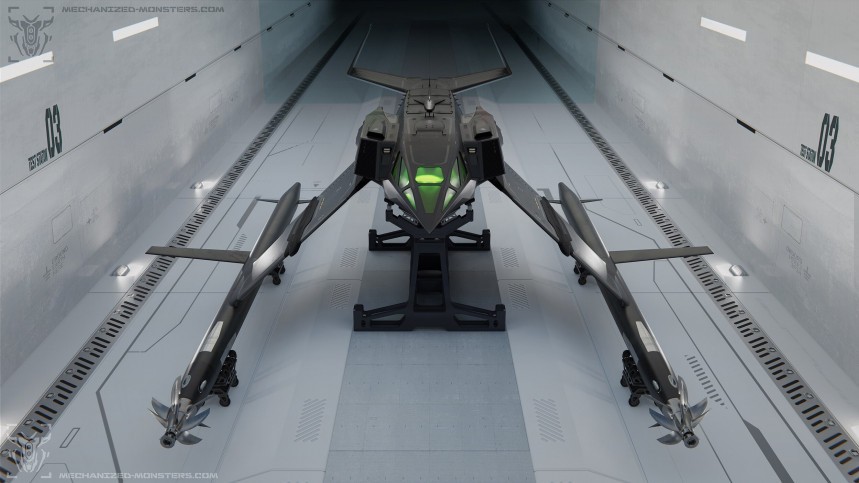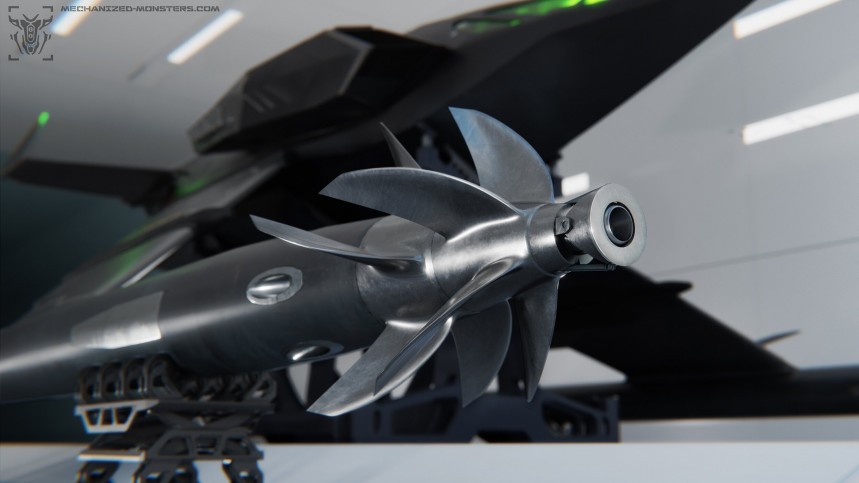Some people say that the definition of genius is to take the inner workings of one or multiple systems and apply them to another domain with absolute success. One designer may just fall right into that definition with this SWATH conceptual vehicle.
Mechanized Monsters is a website that features the works of transportation and conceptual artist by the name of Alice Bruderer. With a background in industrial design and a love of aviation, among other things, Bruderer can bring forth designs like the one seen here today.
So what are you looking at exactly? Well, I did mention that this sea-faring stealth-bomber look-alike is named SWATH which stands for Small Waterplane Area Twin-Hull. And just like that, you may have an idea of what you’re witnessing. But that’s just part of the story; wait until you get to see the goods.
Now, SWATH is a vehicle meant to cruise the surfaces of oceans and other bodies of water with a speed of over 50 knots (57.5 mph). To achieve this sort of ability, Bruderer took inspiration from hydrofoil craft and the USSR’s “Shkval” torpedo, an underwater missile capable of attaining speed over 200 knots (230 mph) underwater!
First thing’s first. In order to reduce drag on a vehicle that is waterborne, what you’ve got to do is limit contact with water as much as possible. To do that, Bruderer lifts the SWATH body on two arms with smaller elongated hulls on the ends. It’s these hulls that will sustain the majority contact with water, theoretically, wink wink. Smaller hulls usually mean a smaller surface area of contact, leading to a faster craft.
However, I never told you about the Shkval because it attains that unimaginable speed by creating a bubble of air that surrounds the projectile and is affected by only as much friction as though the torpedo were flying through the air, not water. Until now, I’d never heard of a Shkval torpedo and how it works, but it makes sense when you think about it. Guess what? This sort of torpedo is still in use today.
This same effect is created at the tips of each SWATH hull via those propellors you see. Honestly, I initially believed that the propellors are used for, well, propulsion. How wrong was I? Instead, they function by spinning in the opposite direction needed for propulsion as to make the air bubble large enough to extend the full length of the hull. As for the air to be supplied to this mechanism, at the very tip of the hull, a nozzle pushes air in front of the propellors.
When it’s time to slow down, in order to disrupt the air bubble and let water once again touch the surface of the hulls, stowed control brakes pop out of the hulls and break the bubble apart.
Now, the body above water has some use in this whole system too. On the sides of the cockpit, you can see two massive intakes. Here, turbines and compressor inlets power the SWATH along and feed air to the bubble factory hidden below the surface.
Funny enough, a vehicle like this has already been created and even tested, Juliet Marine’s Ghost, which functioned on similar principles. But no one’s heard anything about that craft for some time, so the SWATH it is, for now.
So what are you looking at exactly? Well, I did mention that this sea-faring stealth-bomber look-alike is named SWATH which stands for Small Waterplane Area Twin-Hull. And just like that, you may have an idea of what you’re witnessing. But that’s just part of the story; wait until you get to see the goods.
Now, SWATH is a vehicle meant to cruise the surfaces of oceans and other bodies of water with a speed of over 50 knots (57.5 mph). To achieve this sort of ability, Bruderer took inspiration from hydrofoil craft and the USSR’s “Shkval” torpedo, an underwater missile capable of attaining speed over 200 knots (230 mph) underwater!
However, I never told you about the Shkval because it attains that unimaginable speed by creating a bubble of air that surrounds the projectile and is affected by only as much friction as though the torpedo were flying through the air, not water. Until now, I’d never heard of a Shkval torpedo and how it works, but it makes sense when you think about it. Guess what? This sort of torpedo is still in use today.
This same effect is created at the tips of each SWATH hull via those propellors you see. Honestly, I initially believed that the propellors are used for, well, propulsion. How wrong was I? Instead, they function by spinning in the opposite direction needed for propulsion as to make the air bubble large enough to extend the full length of the hull. As for the air to be supplied to this mechanism, at the very tip of the hull, a nozzle pushes air in front of the propellors.
Now, the body above water has some use in this whole system too. On the sides of the cockpit, you can see two massive intakes. Here, turbines and compressor inlets power the SWATH along and feed air to the bubble factory hidden below the surface.
Funny enough, a vehicle like this has already been created and even tested, Juliet Marine’s Ghost, which functioned on similar principles. But no one’s heard anything about that craft for some time, so the SWATH it is, for now.


















